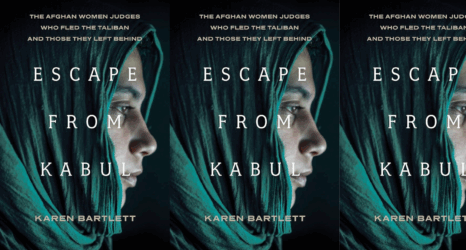
Writing a novel is such a daunting occupation at this time in our lives. I say this as someone who not only came of age in the ’60s and ’70s, but someone who has tried her hand at writing about it—and, like Lee Zacharias, has let it sit, has let it fester, has restructured it more than the customary number of times.
And the maligned ’60s, how many versions of it can there be before we come to terms with the idealism that characterized a generation of youth across the country, that propelled them to rise up and challenge the powers that be?
In her fourth novel, What a Wonderful World This Could Be, Zacharias documents this, granted, in fiction (which we all know is the lie that tells the truth better than anything swearing on a stack of bibles)—beginning with a nod to the Mississippi Freedom Summer, the action upon which the protagonist’s young husband first cuts his activist teeth.
This well-organized act of resistance by Student Non-Violent Coordinating Committee in 1964 to increase Black voter registration drew students from all over the country, although it’s remembered chiefly for the in-cold-blood murder of three activists—Schwerner, Chaney and Goodman—by the KKK.
Those of us who claim the ’60s as our stomping grounds know that the experience ranged from peaceful demonstrations, to striking—refraining from going to classes—to acts of resistance that included violence. The causes ranged from civil rights to voting rights to grand protests of the Vietnam War. The anti-war protest, a feeling of idealism—that we could “change the world”—that we could build a coalition of peaceniks was a palpable feeling. As someone who has taught in colleges for the past 40 years, I can safely say that nothing resembles the wave of solidarity that caused my college in New England—and so many others across the land—to literally shut down in 1970, shortly after students were gunned down at Kent State by the National Guard.
As far as I can tell, only the pandemic has had that power.
Zacharias’s book recreates that time with her novel, the title in homage to Sam Cooke’s iconic song, What a Wonderful World This Would Be.
The reader cannot help but to think—what’s different now?
Now—when instead of Martin Luther King, Jr., we have Malala Yousafzai and Greta Thunberg. Now when instead of television, we have iPhones with video cameras—so yes, the revolution can be videoed. Now, there is a violence not only in the hands of the local powers that be, but in a striking number of ordinary citizens with arsenals at their disposal.
Now, when we are so divided as a country, we see Republicans balking at the idea of investigating the insurrection—and we are still fighting for voting rights and civil rights and witnessing acts of racism that is so out of control, some people are afraid to leave their homes.
And now, when we are still in the throes of a pandemic—that is a global pandemic.
Speaking of the globe, we are in what has been labeled the sixth extinction. The causes are before us—our children are wondering if they will have a future. Our children—the children and grandchildren of those who, nearly 60 years ago, raised enough hell to eventually get us out of Vietnam—where we should never have been in the first place.
Perhaps what finally put an end to the ’60s, what dealt those years the final blow was the absurdity of the election of 2016, ushering in the “baby boomer” Donald Trump whose connection to the cause can be seen only by the success of his draft dodging.

Here, in this book, we have the lost moment before us—a time between 1964 and 1971, that encompasses student demonstrations and rallies and riots, merging the causes of civil rights and anti-war, and more. In the shadow of these events, the charismatic Ted Neal wins over the formerly apolitical Alexandra Du Champ with his dream of forming a collective in the Midwestern college town of Limestone, which happens to be her hometown. In the small building he purchases on the other side of town, Crow Hill, a family-like group of college students and community organizers will grapple with the vagaries of living together, along with their radical politics, with walls that are not thick enough to provide discretion with respect to the various cohabitations. While still part of the collective that for her functions as family, Alex will pursue her interest in photography and serve as a cook.
Later on, when Alex and another woman, Stacy, are nabbed by Pentagon police, there will be a scene with even less privacy, when the protesters will be lucky to get out of there with their bodies intact.
At first it’s the adventure, the power of the dream that compels them—for example, to hop on the greyhound to Selma, where Martin Luther King, Jr. was arrested, and march to Montgomery. They will be there, en masse, a presence—from Washington D.C. to Mayor Daley’s Chicago. We see them acting in concert, their collectives, their demonstrations, their protests, their speeches, and just how the government responds. A significant portion of this book is dedicated not only to documenting the history but to examining the forces that drive these characters to take part, to put themselves in harm’s way.
Zachariass’ novel ends in the early ’80s, when the ’60s really ended, when Reagan was elected, and when Ted Neal turns himself in.
In the book’e open, we initially meet Alex as a young, middle-aged photography professor whose husband (Ted Neal) has been missing for 11 years; she finds herself lusting over a student, of whom she thinks: “He has talent, but so do a lot of students. It’s genius that’s rare, talent just common enough to be cruel.”
A little, later, we meet Steve Kendrick, introduced to us as Alex’s “oldest friend,” who dismisses a revelation she had just shared with him, for which she derides him: “as if such harmony were as everyday as breakfast.”
As the story unfolds, as it back-pedals, that is to say—we will learn that “friend” hardly contains their history. But before that, we discover with Alex that the missing husband has not only turned himself in, but he’s been shot.
It is then that, we are taken back to Alex’s childhood, which is the part of the novel that hardest to put down. Zacharias creates loops to a future chapter that help explain the present event. Its puzzle pieces are strategically placed, designed to honor the unwritten rules of gaps and delays so helpful in producing suspense. Soon enough, we will deduce that Kendrick is not simply friend, but also father, lover and brother to her—he’s her family.
Propelling ourselves into the life and times of Alex, first as a young girl, and then as a woman, picking up the cues of life from books and films and then from the Kendrick, a photography professor, 12 years her senior, for whom she will also become a protégé, we begin to understand the leaps into danger she takes in order to create her life—how she becomes fodder for Ted Neal and company, but also how she stands up for herself and for her beliefs.
After going down to Mississippi, Ted hitchhikes to where Alex has just moved—with Kendrick—in Colorado.
When Alex calls him a saint, Ted tells her that he realized later that the movement that drew him to Mississippi was not his, and that he was no “saint”—but that Chaney was.
“J.E. Chaney wasn’t the only black man to be lynched in Mississippi this summer. The others didn’t die in the company of white men; their names didn’t make the news. … he’s your saint. He died because he was in the company of white men, and now the whole world knows. That’s why we went down there. We just didn’t know it….We were needed, but we’re not needed in anymore.”
Ted is not without integrity, although a case might be made for naivete.
When Alex first spots Ted—or at least, what she thinks is her first time—he is badly beaten. They are all on the subway, in NYC. She is accompanied by Kendrick, with whom she has been living and who dismisses her concern as foolish, bespeaking her lack of city smarts, but her engagement turns out to be prescient.
Later, she would explain to Ted: “You got in my head.” He will say the same thing.
Readers find clues about characters in dialogue, such as when one of the house members of the collective Ted has established, who is a member of SDS questions Ted: “’Suppose you knew someone who planned to [commit violence]. Not likely you’re going to talk him out of it. What could you do? Unless you want to go to bed with the Shoes.’ That was the name SDS had given the FBI.”
Ted insists: “’We don’t burn libraries.’”
Unlike some of the others in the collective, Ted makes himself clear that he’s not about to take part in violent action. But this will not spare him from the violence, from being at the receiving end of it.
Until the split—this group remains residence until the Weathermen take an interest. Alex is clear about exactly where she stands. And this for at least a while, is in sync with where Ted stands—until it’s not.
At first, it’s the sheer beauty of Zacharias’s sentences that grabs the reader. Then, it’s the daring nature of the characters, their design, their confrontations, and finally, we’re left to evaluate the times themselves. We can compare the student demonstrations of the ’60s with the dearth of it in the ’80s, when we observe Alex as photography professor, as potential widow, and her newfound lust for a student.
Here is an intricate, complex tale that deftly examines the price of political action—where it comes from, how it sets out to create a change, at what cost, the various characters it seems to attract, how it exacts its price, whether it’s a beating by the police or a beating by the extreme right or by the extreme left—how it plays out among the people you love—and finally, whether or not it exacts the change it’s meant to.
In a wonderful interview with Zacharias in Southern Literary Review by Abigail DeWitt, the novelist reveals that years ago, an editor suggested she write a novel about the ’60s—a political novel. Zacharias says it’s not at all autobiographical. She acknowledges those who provided first hand accounts of the times, notably Cathy Wilkerson, of the Weathermen, who, like Ted, disappeared—in her case, after the bombing of her parents’ Greenwich Village home. Wilkerson later turned herself in and was given a reduced jail sentence.
At the heart of this story is this precocious and fearless autodidact who honors her own compunctions—not only self-taught but self-raised—she’s sensitive and loyal and rational, yet impulsive as only a lover and artist must be. To some extent, this is also a portrait of an artist as a young girl.
But most important is this novel’s evocation of a history we’d do well to revisit, in my “august” woman’s opinion.
Up next:





